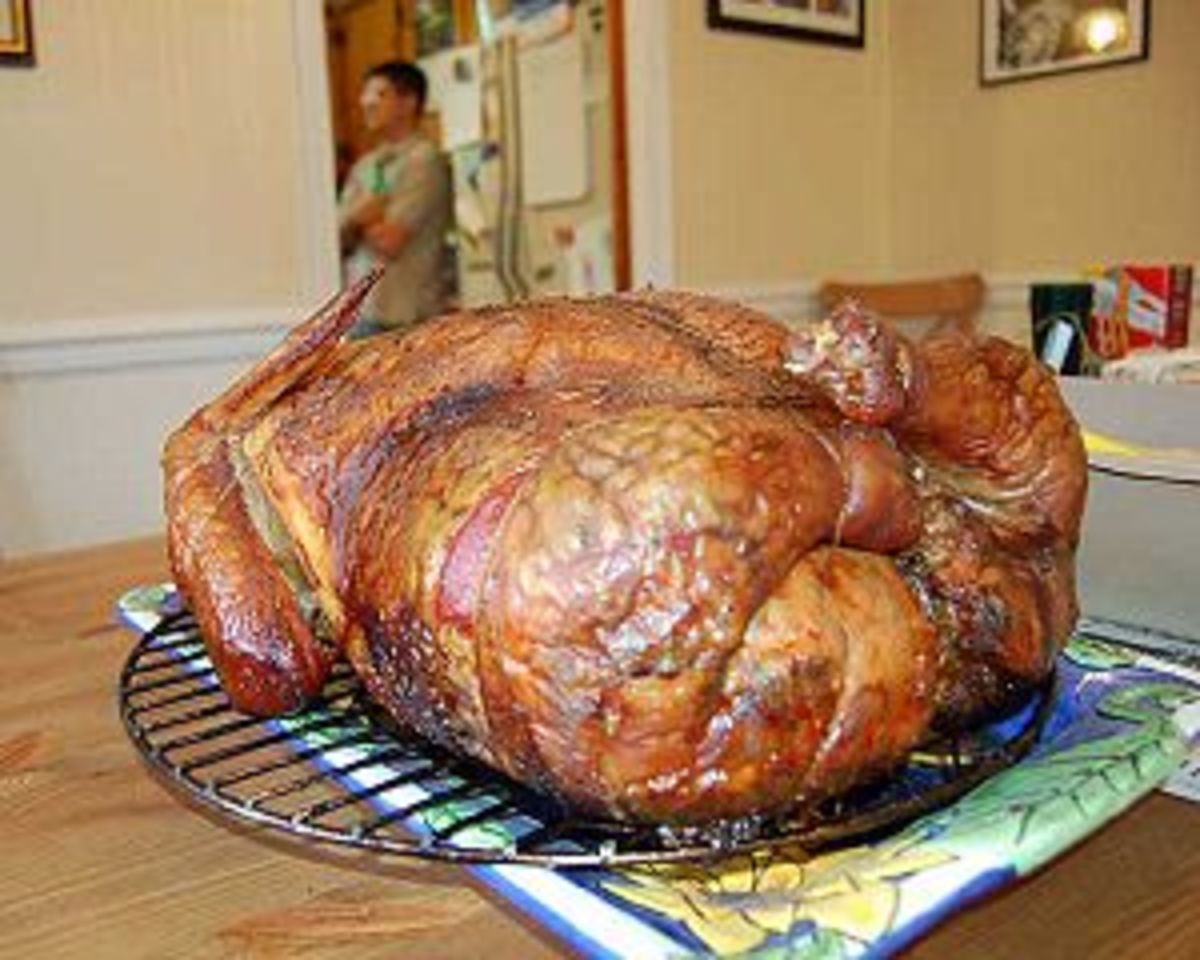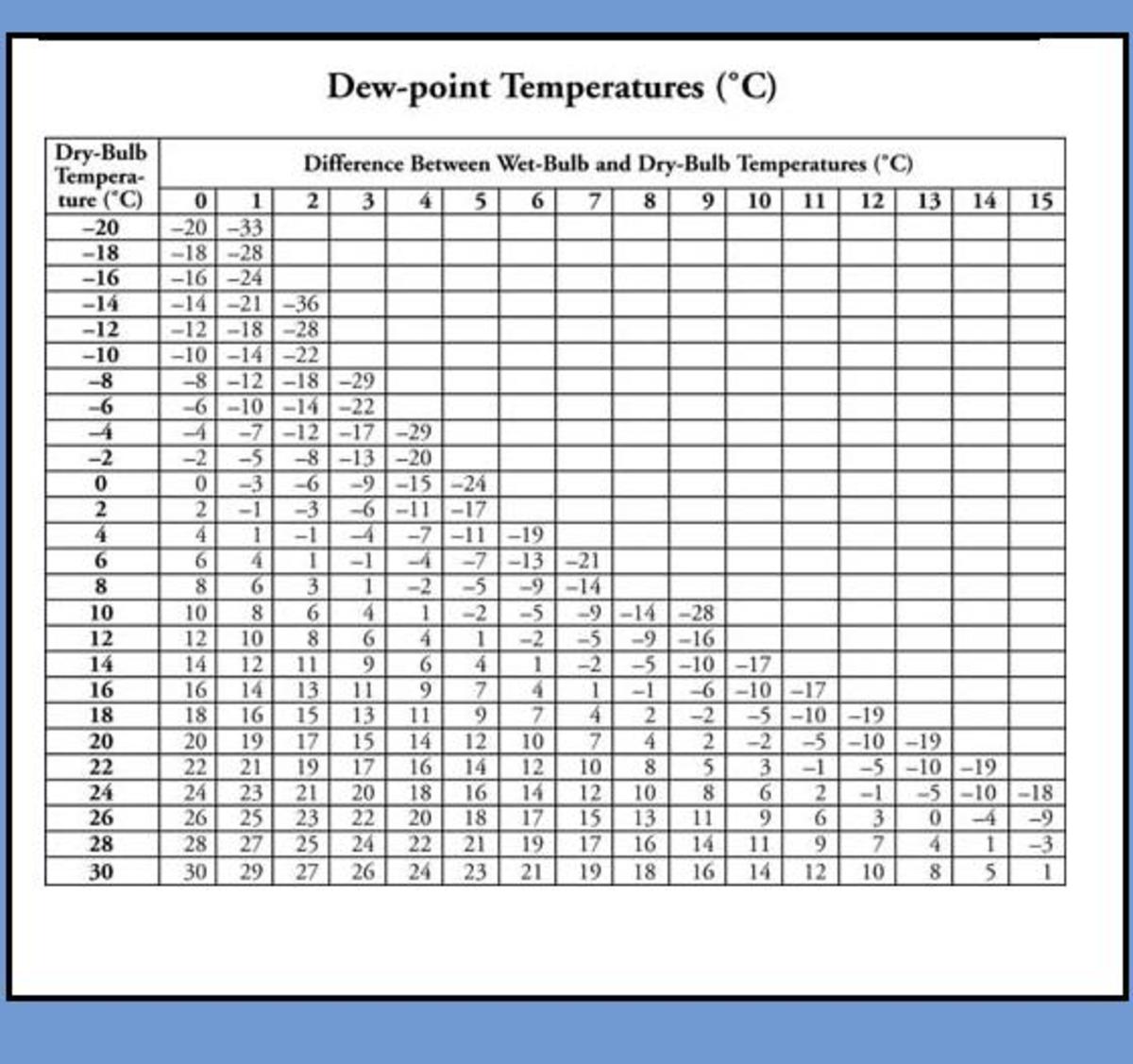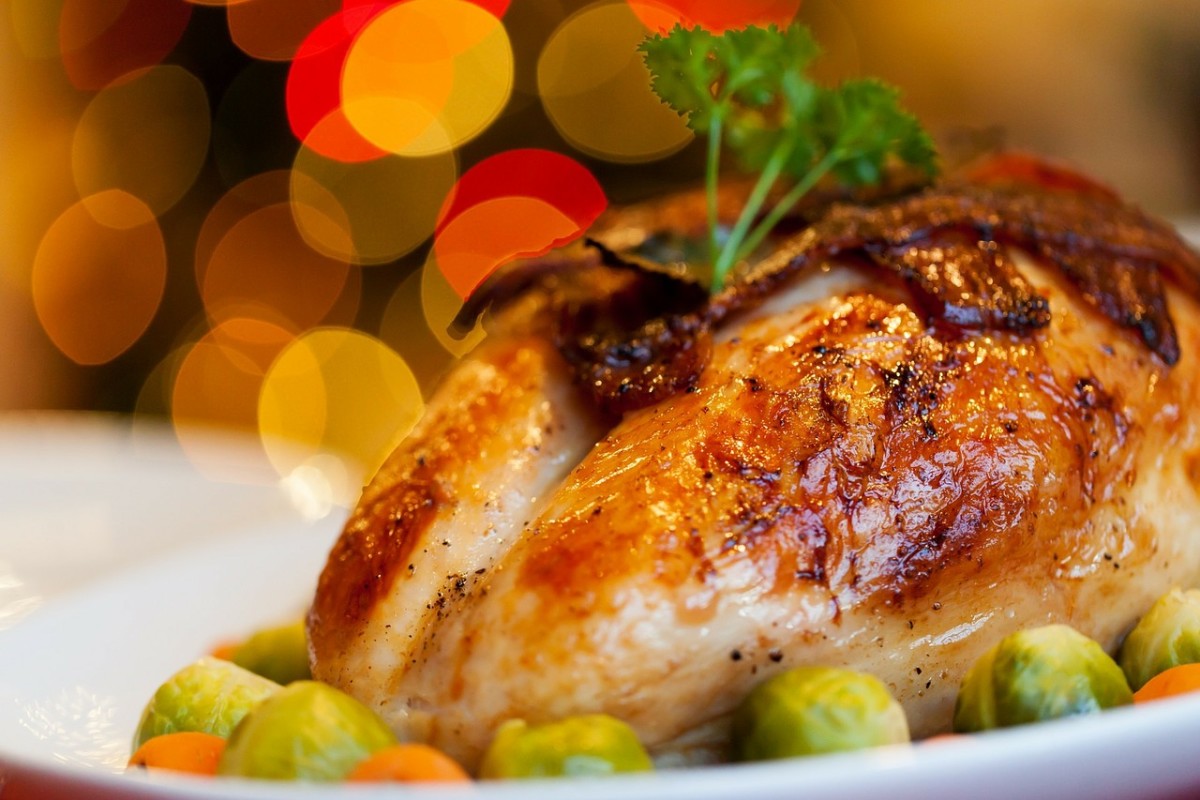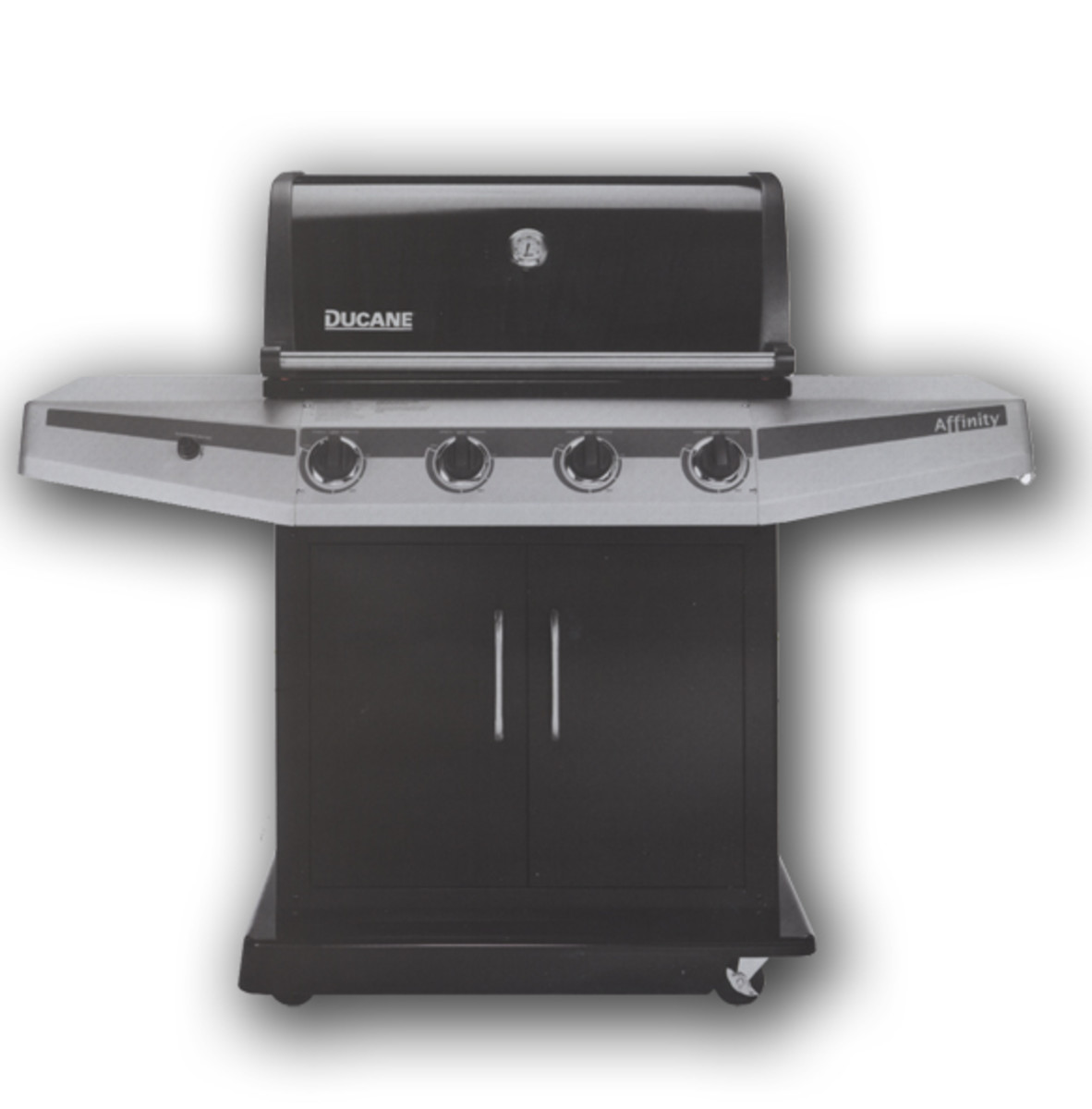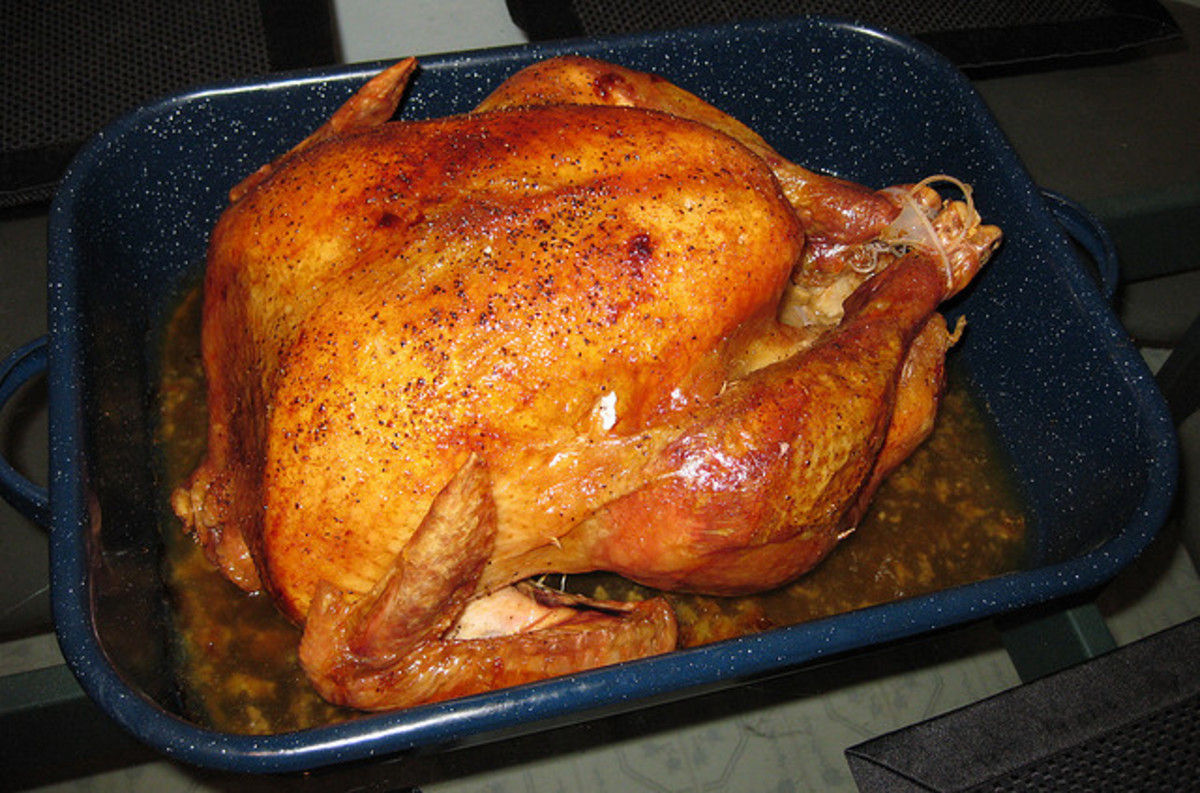Barbecue Turkey With Aromatics
Grilling a Turkey
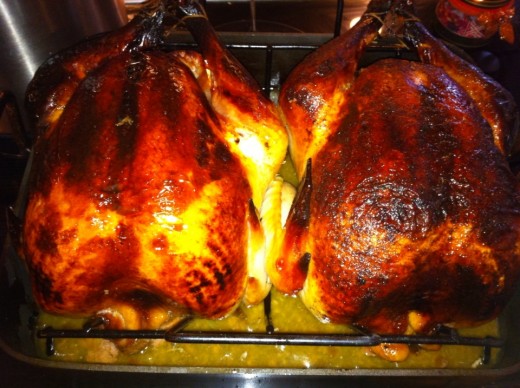
Selecting a Turkey to Barbecue
The first step is selecting a turkey. Around Thanksgiving, many stores carry deeply chilled turkeys that have been freshly slaughtered. These aren't quite frozen birds. A deeply chilled turkey is preferred to a frozen turkey. While getting a fresh bird is important, the most important part of the turkey selection process is the size. Get a turkey that is under 14 pounds. If you need to cook for a large group, opt for barbecuing multiple turkeys between 12 and 14 lbs.
There can be quite a bit of pressure to have a moist and delicious turkey so people will think that by spending more on an organic turkey that they are getting a better bird. While there are good reasons to select an organic turkey or a free range turkey, taste is not one of them. Our side by side tests show that a typical Foster Farms turkey tastes better than a Diestel organic turkey. Our recommendation is to save the money and go for taste.
Tips:
- Select a turkey between 12 and 14 pounds
- Get a deeply chilled turkey (not frozen)
- Regular store bought turkeys are moister than organic turkeys in our tests
Turkeys Brining in Cooler
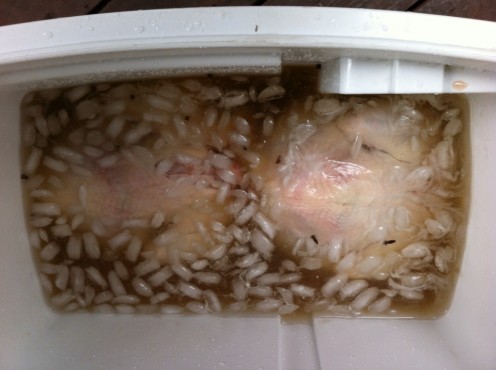
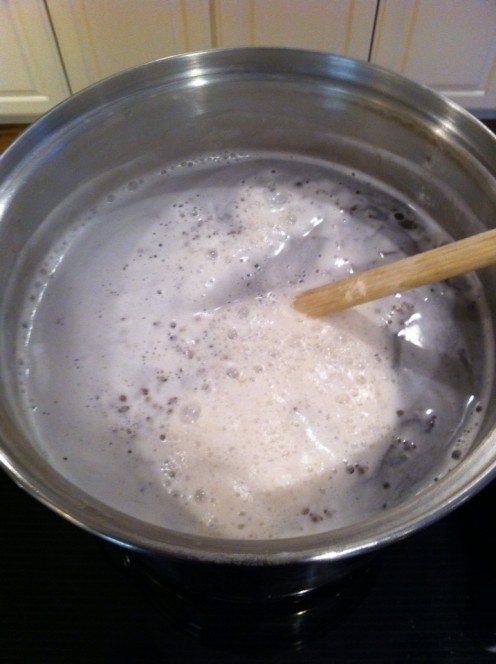
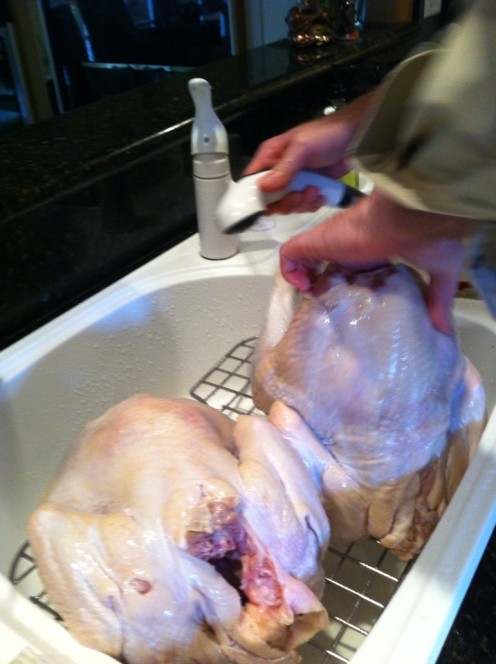
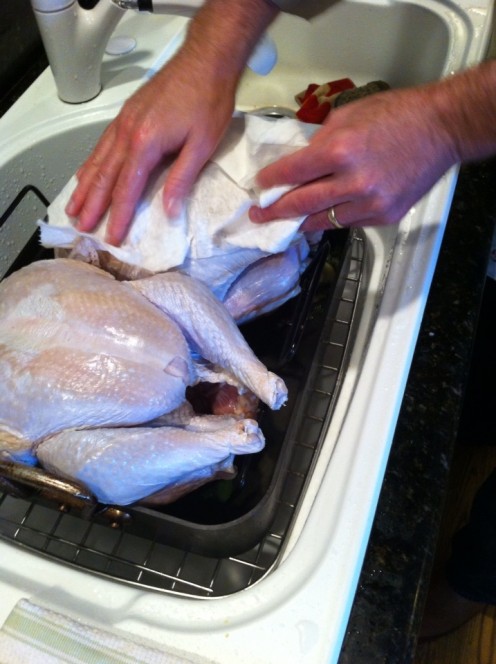
How to Brine a Turkey
Brine is simply a sugary and salty solution that is absorbed by the turkey that helps keep it moist while the turkey is barbecued. For each pound of turkey, brine it for at least one hour. As an example, a 14 lbs turkey should be brined for a minimum of 14 hours.
My bringing recipe has been tweaked and perfected for turkey. Follow this brine recipe if you want the best turkey ever.
- 1 gallon of water in a big pot
- 2 cups kosher salt
- 2 cups honey
- 2 quarts chicken broth
- 1 large bag of ice
- 3 tablespoons of cloves
Boil the water and add the salt, honey, and cloves. Stir the solution until the salt is fully disolved. In a large brining container, add the chicken broth, ice and the boiling solution. The ice should cool the mixture so it's about room temperature. Place the turkey into the brine with the breast side up.
If you don't have a container large enough to hold your turkey, or you are barbecuing more than one turkey, I use my igloo ice chest as the brining container. Just make sure it is cleaned out really well.
Prepairng the seasoning for the inside of the turkey
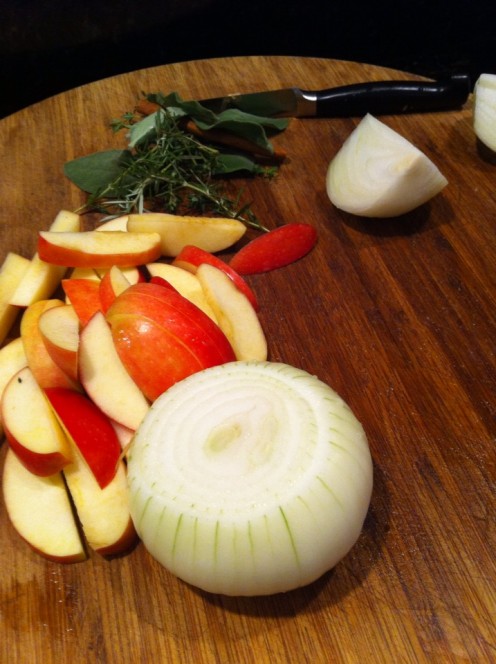
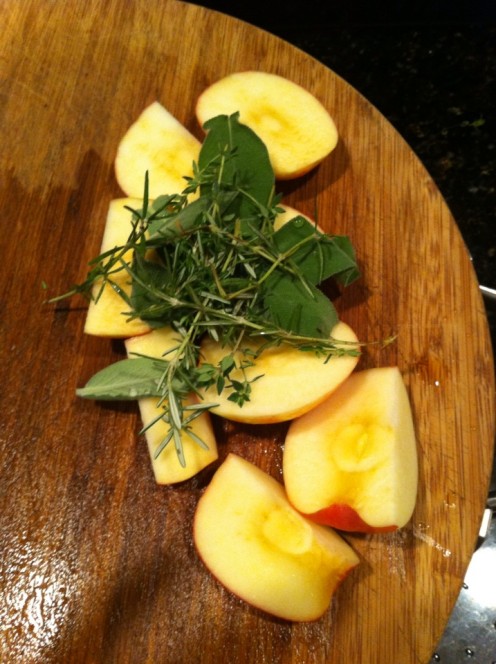
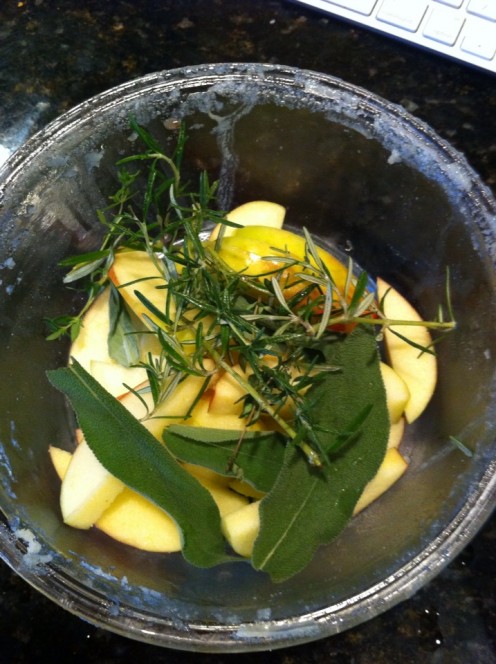
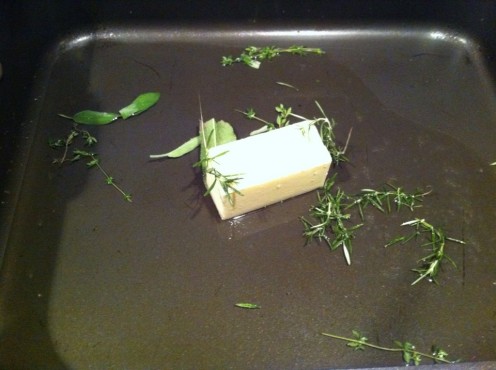
Preparing the Aromatics to Barbecue the Turkey
Rinse the brine off the turkey under cold water. Place the brined turkey in a roasting rack tray and pat dry with paper towels.
For the inside of the turkey (neck and gizzards removed)
- 1 apple
- 1 yellow onion
- 4 sprigs of rosemary
- 6 sage leaves
- 1 tablespoon cloves
- 1 cinnamon stick
- 1 cup of water
Place all the ingredients in a microwave safe bowl and microwave for 5 minutes. Take the mixture and place it in the cavity of the turkey.
In the roasting pan
- 1 cup white cooking wine
- 1 cube of unsalted butter
- 3 sprigs rosemary
- 3 sprigs thyme
- 4 sage leaves
*As the turkey barbecues, add water to the pan so it doesn't burn up. Use the mixture in the pan to baste the turkey as it barbecues. For the initial basting, add olive oil to the skin with pepper.
Truss the Turkey by Tying the Legs and Tucking the Wings
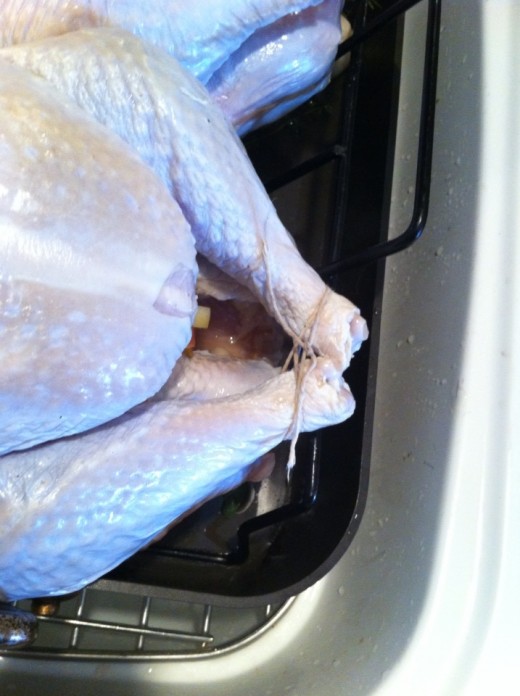
Truss the Turkey
Once the turkey is stuffed, it's time to truss it by tucking the wings forward and then underneath the turkey. Next take a long piece of butchers string and tie the end of the drumsticks together. There should be enough extra string on each side of the drumstick to pull the string around the turkey and to tie it off in front of the the neck stub. The wing tips should tuck into the string that acts like a belt going around the turkey.
Setting up the Barbecue Fire
We want to Barbecue our turkey with indirect heat. Using a large roasting pan will help reflect the heat, but I recommend taking a small disposable aluminum pan and placing in in the center of you barbecue coal grate. On each side of the pan place the charcoals. A 12 - 14 lbs turkey will take around two to three hours to barbecue at 350 degress. So make sure to add enough charcoal to last the entire cook. This is about ten pounds of charcoal.
Barbecuing the Turkey

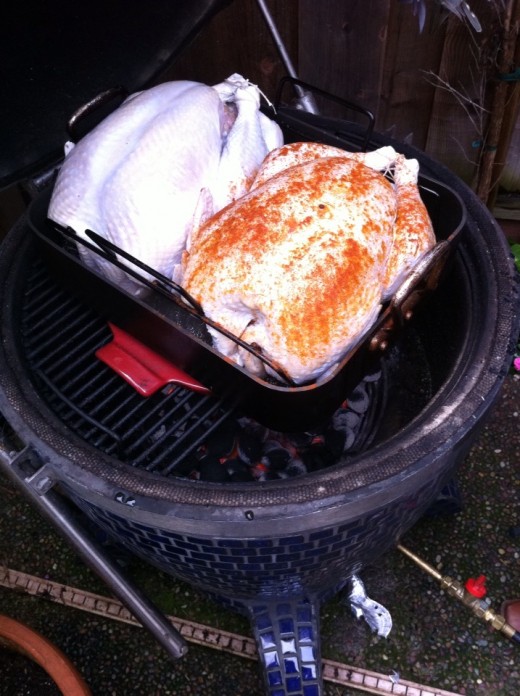
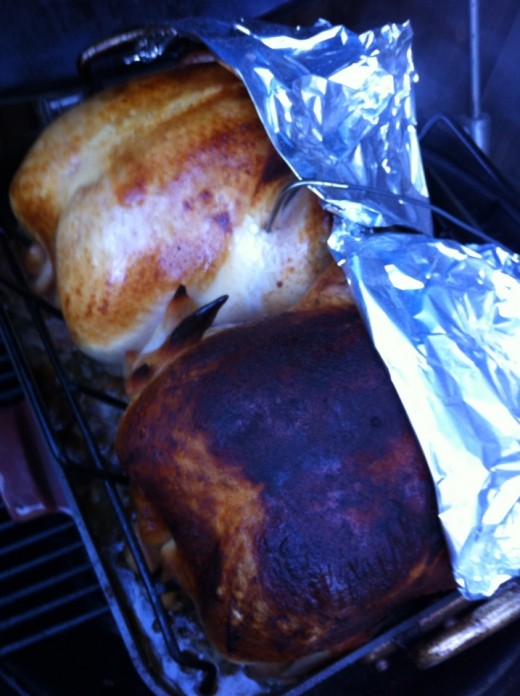
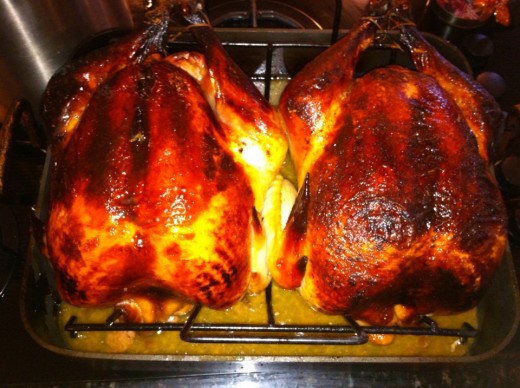
Barbecue a Turkey to an Internal Temperature of 165 Degrees
Use an external meat thermometer so the temperature of the meat can be watched closely to avoid over-cooking the turkey. One of the most important things when barbecuing a turkey is inserting the meat thermometer into the turkey in the right location and depth. Place the thermometer in the wrong spot and your turkey won't come out the way you want. I recommend placing the thermometer in the fatest part of the thigh, just inside the leg and about halfway through. Be careful to get it right in the middle. If you get it too close to the bone or the tip of the thermometer too close to the edge, the thermometer won't be accurate. Set the thermometer alarm to ring at 165 degrees. That's right, you will want to pull the turkey off the barbecue when it's at a 165 degrees.
Cooking time and telling for the turkey is done
It typically takes a turkey about 1 hour for every five pounds if barbecuing at 350 degrees. The meat thermometer is the best guide, but I also like to use an instant read thermometer to test other spots of the turkey. Lastly, the juices should be clear when the turkey is completely finishing getting barbecued. The best place to check the juices is from the thigh meat.
For people that want crispy skin on their turkey, once the turkey gets to 145 degrees, crank the temperature on the barbecue up to 400 - 425 degrees for the remainder of the cook.
Turkey Gravy
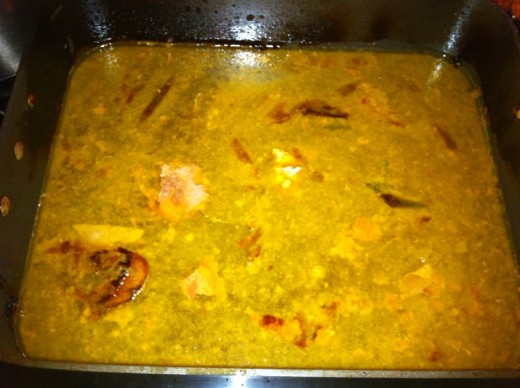
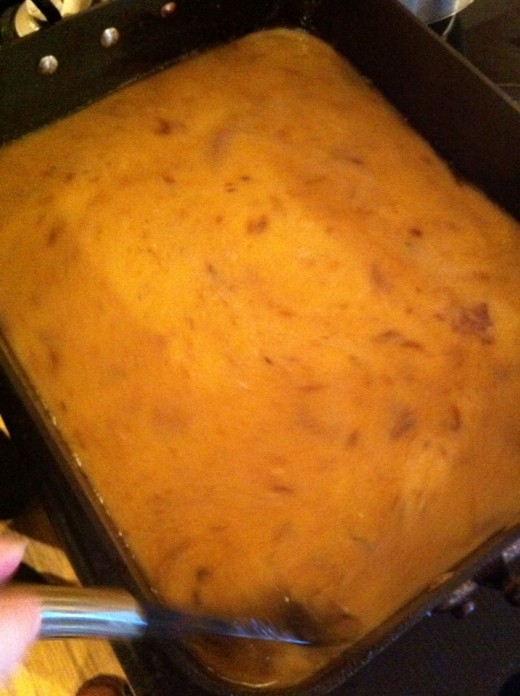
Making Turkey Gravy from the Drippings
Yes, you can make gravy from a barbecue turkey. The pan underneath the turkey will catch the drippings. It will most likely need to be thickened.
1. Put the drippings over a medium heat and whisk.
2. As the turkey drippings are whisked, add about 1/2 cup of flour and water mixed in a measuring cup.
3. Add more flour with water until the turkey gravy is thick. Continue to whisk.

